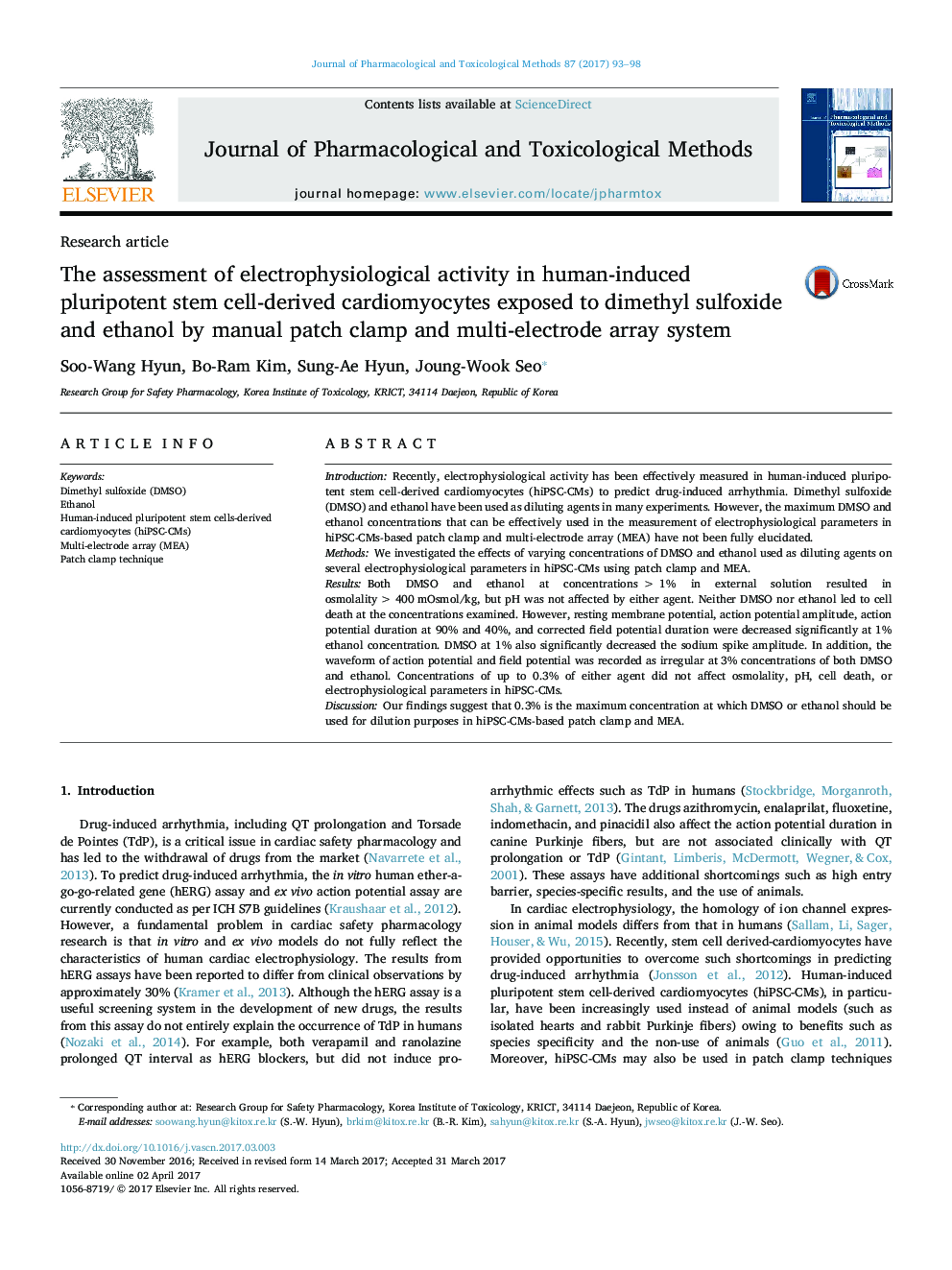| Article ID | Journal | Published Year | Pages | File Type |
|---|---|---|---|---|
| 5556513 | Journal of Pharmacological and Toxicological Methods | 2017 | 6 Pages |
IntroductionRecently, electrophysiological activity has been effectively measured in human-induced pluripotent stem cell-derived cardiomyocytes (hiPSC-CMs) to predict drug-induced arrhythmia. Dimethyl sulfoxide (DMSO) and ethanol have been used as diluting agents in many experiments. However, the maximum DMSO and ethanol concentrations that can be effectively used in the measurement of electrophysiological parameters in hiPSC-CMs-based patch clamp and multi-electrode array (MEA) have not been fully elucidated.MethodsWe investigated the effects of varying concentrations of DMSO and ethanol used as diluting agents on several electrophysiological parameters in hiPSC-CMs using patch clamp and MEA.ResultsBoth DMSO and ethanol at concentrations > 1% in external solution resulted in osmolality > 400 mOsmol/kg, but pH was not affected by either agent. Neither DMSO nor ethanol led to cell death at the concentrations examined. However, resting membrane potential, action potential amplitude, action potential duration at 90% and 40%, and corrected field potential duration were decreased significantly at 1% ethanol concentration. DMSO at 1% also significantly decreased the sodium spike amplitude. In addition, the waveform of action potential and field potential was recorded as irregular at 3% concentrations of both DMSO and ethanol. Concentrations of up to 0.3% of either agent did not affect osmolality, pH, cell death, or electrophysiological parameters in hiPSC-CMs.DiscussionOur findings suggest that 0.3% is the maximum concentration at which DMSO or ethanol should be used for dilution purposes in hiPSC-CMs-based patch clamp and MEA.
